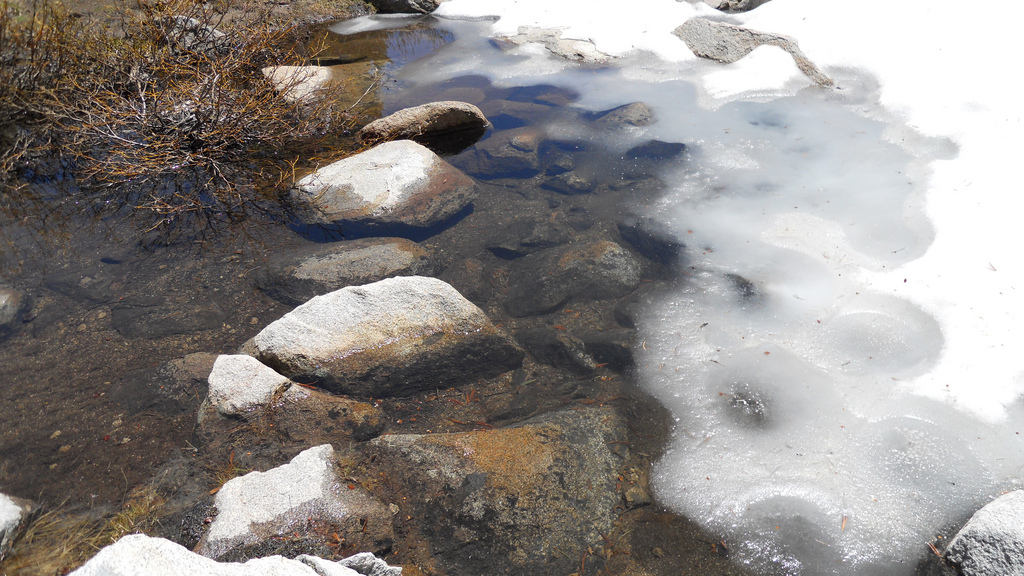We're open daily! View holiday hours
Science News
Measuring Available Water
December 17, 2013
by Molly Michelson

“Water, water everywhere, nor any drop to drink.” Samuel Taylor Coleridge may be talking about a sailor at sea but it could also apply to California’s water situation and availability. As California faces its driest year on record and the Department of Water Resources is concerned about meeting future needs, a group of scientists is trying to figure out exactly how to measure the water we do have, at least in the form of snow in the Sierra Nevada.
At the American Geophysical Union Meeting last week in San Francisco, researchers presented the results from the first trial of NASA’s Airborne Snow Observatory (ASO). ASO was initiated to carry out two tasks—to measure the amount of snow and to estimate the date when the water from that snow would be available.
Two instruments aboard ASO allow scientists to conduct this research. A scanning LiDAR measures the snow depth and density—something that space-based satellites are unable to do from their heights. Then, an imaging spectrometer measures the reflectivity (or albedo) of the surface, notifying the scientists as to the rate of sunlight absorption. These data provide high-resolution maps (to one-and-a-half meter spatial resolution!) that are the first of their kind.
Knowing how much snow is there and when it will be available is key for reservoir and water resource managers. Last spring, ASO flew its first demonstration mission with weekly flights over the Tuolumne River Basin in the Sierras. Despite the minimal snowfall of the year (driest in 119 years, at least), the team was proud to announce that data from ASO helped managers at the Hetch Hetchy reservoir reach full capacity by the end of the snowmelt season with no water spillage, and generate more than $3.9 million in hydropower. Talk about a balancing act!
The team has funding from the California Department of Water Resources, NASA, and NOAA to continue weekly flights in the Sierras this spring, traveling beyond Tuolumne. In addition, last spring saw monthly flights in the upper Colorado River Basin, and the team hopes more resources are put toward that area.
In our western states where, to say the least, water isn’t everywhere, ASO helps to manage our limited water resources as effectively as possible by monitoring the snow pack that provides much of our fresh water.
Image: Mr Stobbe/Flickr